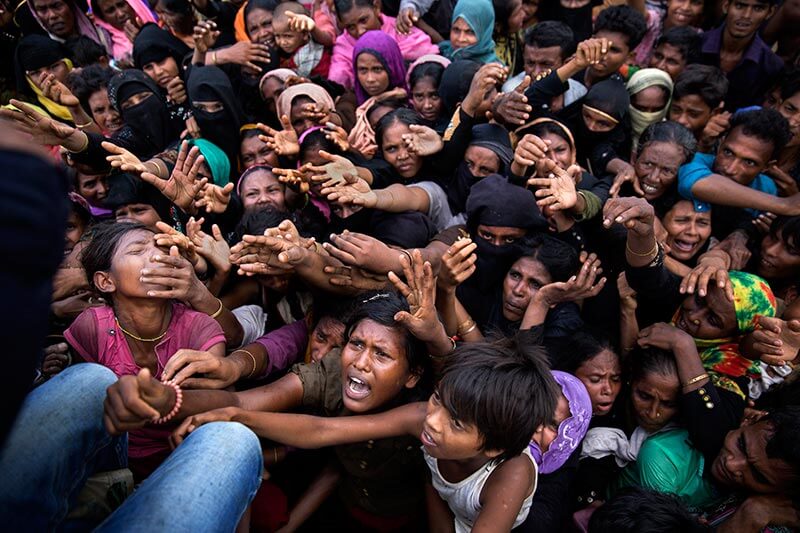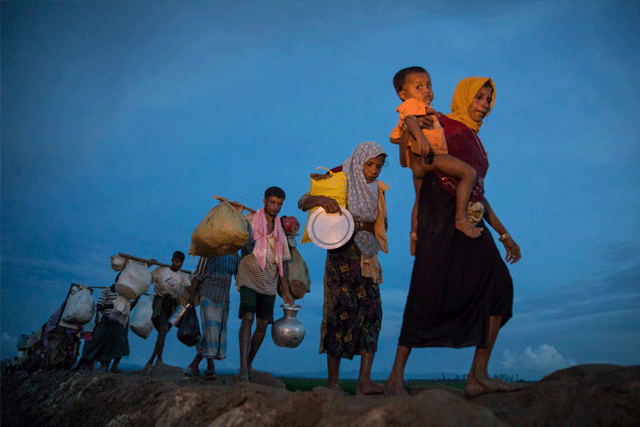Rohingya Refugee Crisis: Families Struggle in Bangladesh’s Camps Eight Years On
August 26, 2025
COX’S BAZAR, Bangladesh: Muhammad Rezwan was just 21 when he fled the Myanmar army’s violent crackdown on his village in 2017, a campaign UN experts have called genocide. Today, eight years later, his biggest concern is not immediate danger but raising his two young daughters, aged two and four, in the world’s largest refugee settlement.
“I fled with hundreds of others seeking safety,” Rezwan tells The Independent. “But the situation is still grim. The future of my daughters is uncertain.”
Bangladesh currently shelters 1.2 million Rohingya refugees, half of them children, who fled violence in Myanmar’s Rakhine state. Over 700,000 Rohingya arrived in a massive exodus starting on 25 August 2017, escaping shelling, massacres, and village burnings amid conflict between the Myanmar army and the Arakan Army insurgent group.
The military crackdown occurred while Aung San Suu Kyi was Myanmar’s state counsellor. She defended the military against genocide allegations in 2019 at the International Court of Justice and was later deposed in a 2021 coup. The situation in Rakhine remains unstable, further complicating efforts for the safe return of refugees.
Aid Cuts Impact Refugees
Aid cuts by the U.S., implemented under former President Donald Trump, have worsened conditions in Bangladesh’s camps. Alexander Matheou, Asia Pacific Regional Director of the International Federation of Red Cross and Red Crescent Societies (IFRC), warns:
“If people don’t have enough to eat, the camps will not be safe. The consequences could be unpredictable.”
Food, soap, and education are all affected. Nearly 250,000 children are at risk of losing access to schooling in 2025, while basic hygiene services may decline sharply.
The IFRC provides essential relief, including fireproof shelters, to help refugees withstand natural disasters in the storm-prone region.
Calls for International Action
Recently, Rohingya refugees staged a protest at Kutupalong camp, one of the largest in Cox’s Bazar, demanding safe return to Myanmar and equal rights. Nur Aziz, 19, said:
“We want to go back with equal rights like other ethnic groups in Myanmar.”
Despite increasing arrivals over the past 18 months, funding has been cut. The UNHCR estimates it needs $256 million to support Rohingya refugees this year but has only received 38% of the required amount, the lowest in six years.
Mothers like Rokeya Bibi struggle to provide a future for their children. “Without proper education or livelihoods, our children may resort to illegal activities,” she says.
Bangladesh Calls for Global Support
Bangladesh has long provided protection but cannot allocate more resources, says Muhammad Yunus, urging the international community to create a sustainable plan for safe repatriation. Matheou adds that it is a collective responsibility to manage short-term aid and long-term repatriation solutions.
Since 2017, Bangladesh has attempted multiple repatriation efforts while seeking global support, including from China, to pressure Myanmar to establish a safe environment for return.
“The Rohingya crisis requires continuous international attention until refugees can safely return home,” Yunus said.
The Rohingya remain the largest stateless population in the world, highlighting an urgent need for international collaboration to secure their safety, education, and long-term future.

